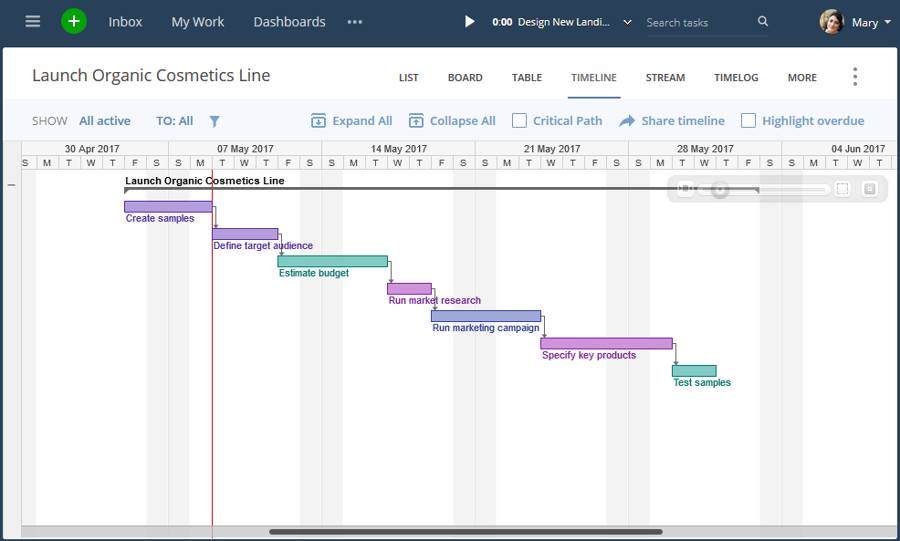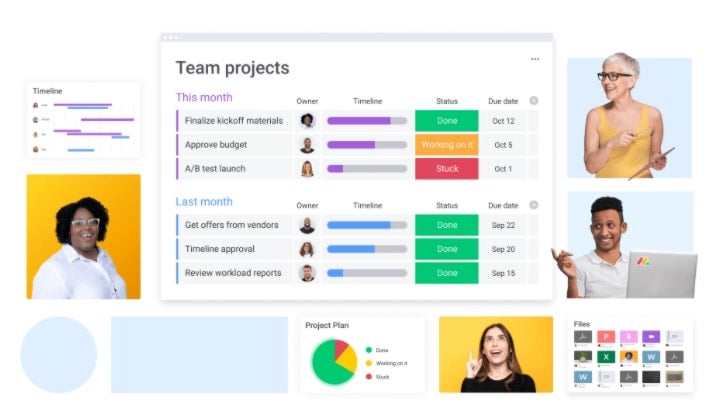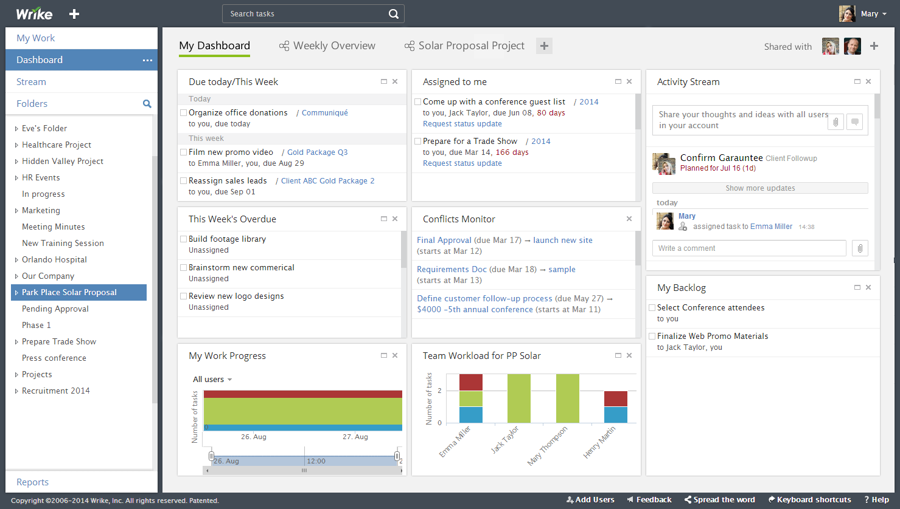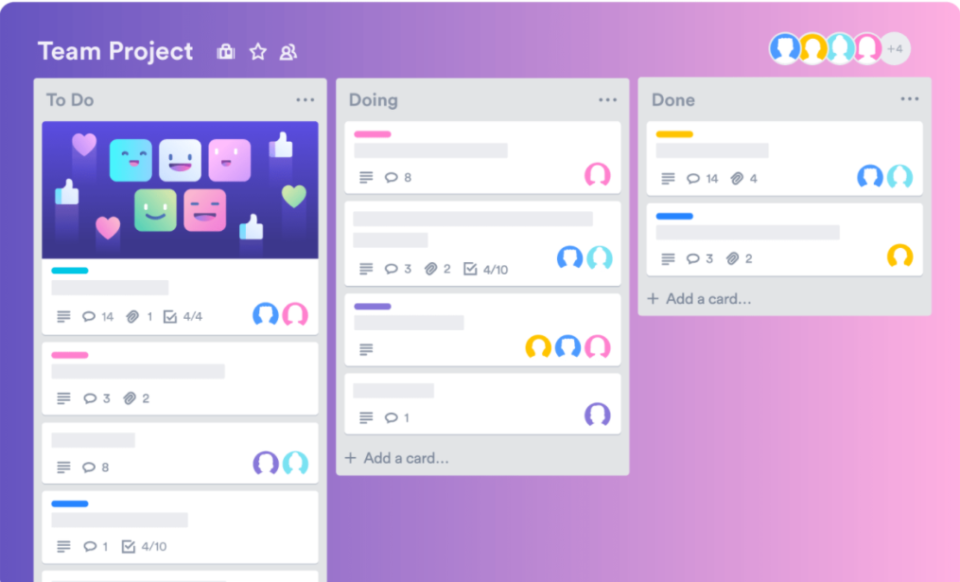What does it mean when someone says the phrase “project management”? We will define the phrase to give you that answer while also revealing the five phases of project management and four popular project management frameworks that help guide it for software developers.
Project Management Explained
According to the Project Management Institute (PMI), project management is “the use of specific knowledge, skills, tools, and techniques to deliver something of value to people.” In layman’s terms and from a software developer standpoint, project management describes the process of guiding a software development team so it can reach its goals and deliver a final product within a specific timeframe and budget. Project management employs collaboration, planning, tracking, documentation, and a set of project management tools to reach this objective.
Reading: Benefits of Project Management for Software Developers
Since the concept of project management may still seem vague to you, let us explain it by using examples from your everyday personal and business life. As a personal example, you may need to cook dinner for a get-together at your home. Cooking that dinner is a project with a defined goal, scope, required resources, and a start and end date. And, to ensure it gets done correctly, it will involve some levels of project management and someone to manage the project – a project manager.
Similarly, you may be part of a team tasked with developing software for a client’s business.
Like cooking for the get-together at your home, this software development project will have a defined goal, scope, resources, and a start and end date. It, too, will require project management to ensure it goes entirely as planned, although the management level will be much more extensive.
Reading: Top Five Project Management Certifications
What is Scope Creep in Project Management?
Scope creep – also known as feature creep or even requirement creep – is in reference to the fact that a software development team’s project and its requirements have a tendency to increase throughout the project lifecycle, or, in particular to software development, during the software development life cycle (SDLC). For example, a simple update to an existing application may turn into several updates, as other features are suggested or required. Changes of the project description or end-goal can also change as the product is being is being developed, causing further scope creep.
What are the phases of project management?
There are several phases of project management that tend to differ according to who you ask. PMI divides the project management process into these five specific phases:
1. Initiating
Many agree that proper preparation is necessary to ensure a software development project gets completed within budget and on time. The initiating phase aims to create a sturdy project foundation by determining the project scope, high-level project overview, and budget.
The project scope refers to the project’s specific boundaries and limits. In other words, it answers these two questions: 1. What will the project cover? 2. What will the project not cover? By defining these project objectives and establishing boundaries, development teams can avoid scope creep that can negatively impact a software project’s budget and bottom line.
The high-level project overview refers to how much time and resources are needed to complete a project’s goals, plus ways to monitor those requirements. Lastly, the budget determines how much is needed to successfully complete the project and deliver the software to the client.
It is worth noting that if you are part of a larger software project, you may run into Project Initiation Documentation (PID) or a project charter. A charter is a preliminary statement revealing a project’s scope, participants, and objectives. It also defines the project manager’s authority, outlines critical goals, identifies primary stakeholders, and describes responsibilities.
2. Planning
Once initiating is complete, you move to the planning phase. This is where you set a software project’s key dates and milestones, such as the final completion date. The planning stage is crucial to project management since it clarifies project timing, so all of your development team is on the same page about what lies ahead. Through proper planning, you can also avoid or at least reduce the confusion that comes with inevitable obstacles down the line.
Besides setting critical dates and milestones, the planning phase involves selecting team members, determining assignments, estimating resources, and outlining deliverables. As if that was not enough work, your development team must also choose which project management methodology it will use to achieve its final goal. Some of the most popular PM methodologies for development include scrum, Kanban, Agileand waterfalls.
Reading: Introduction to Software Development with SCRUM
3. Execute
Now is where your development team will spring into action. In the execution phase, developers begin carrying out their project plan’s details to deliver software to stakeholders. Executing typically involves managing workflows and performing corrective actions to solve issues, but it also overlaps with the following project management phase.
4. Monitoring and controlling
For software project managers, the monitoring and controlling phase is quite crucial to success. It is also one of their most busy phases, as it requires frequent check-ins to denote progress so they can adjust on the fly while reporting pertinent data to team members and stakeholders. The use of frameworks and tracking tools like Kanban boards and Gantt charts is a must when monitoring and controlling, as they can help project managers determine where they currently stand in the project versus where they need to be. If the current status differs from the project’s plan, adjustments will be necessary to adhere to the timeline and budget.
Reading: Overview of Gantt charts
5. Closing
Referred to by some as project delivery, the closing phase is when all activities are completed, and the software is delivered to the client. Beyond delivery, the closing may also entail an audit or review of the pros and cons of the project, plus suggestions on how to improve processes in the future. It may also include the conclusion of any formal agreements or contracts.
What are project management frameworks?
As mentioned above, development teams must choose a project management framework during the planning phase. It is one of the most crucial decisions to be made since the framework or methodology will determine a team’s structure and how it plans and monitors projects. Here are some of the most popular project management frameworks that could help your development team achieve its goals with the fewest issues possible.
Agile project management
Many feel that teams can address issues with inefficiency by selecting the Agile framework. It may be suited for smaller teams since Agile is not very scalable.
Who is Agile ideal for? Software development teams seeking flexibility, as it allows you to adjust project plans on the fly. However, this could be seen as a downside by some since the trial and error nature of Agile can lend itself to instability within projects.
Reading: What is Agile Project Management Software?
Scrum Project Management
Scrum is a popular framework among software developers that many use to implement Agile project management. With Scrum, you divide large projects into smaller sprints that last one to four weeks. In doing so, you can quickly adapt to any changes that the project calls for.
Kanban project management
If your software team receives several incoming requests, Kanban project management may be your best bet. This framework focuses on evolving improvement and uses boards to help teams plan how they will enhance processes or products.
Example of Project Boards
Reading: Project management software for developers
Waterfall Project Management
This traditional project management framework stresses consistency and perfection. Before starting, Waterfall has you schedule and break down a project from beginning to end. Waterfall project management is ideal for teams that must adhere to strict deadlines.
Reading: Top 10 programming methodologies
What are project management tools?
Project management tools are also known as project management software and contain features and toolsets that allow project managers to effectively manage a software development project. Common features of PM tools and software include:
- Time tracking
- Bug tracking
- Task tracking and task management
- resource management
- Gantt Charts
- Kanban boards
- collaboration tools
- File storage and file management
- Documentation and documentation management
- Communication integration, such as email, Zoom, and messenger services like Slack
- Third-party app integration to extend the functionality of PM software

Example of a Gantt chart
Below is a highlight of some of the most popular project management software reviews and comparisons we have covered to help project managers choose the right project management tool for their project needs:

Monday.com

Wrike Dashboard
read more project management tutorials and project management software reviews and comparisons.
